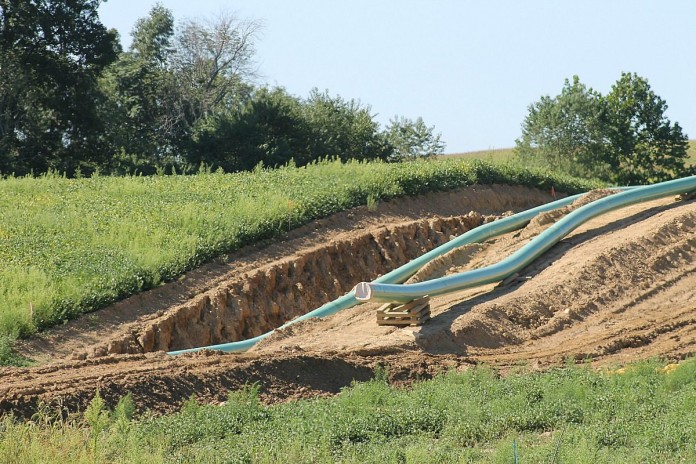Many landowners in Medina County are potentially in the path of a large new natural gas pipeline.
As proposed, the line will start somewhere in eastern Ohio and traverse through several counties entering Medina County near Wadsworth, and exit in the northwest portion of the county into Lorain County and onto Ontario, Canada.
Reportedly as large as 42 inches, the proposed swath of a construction right-away and long-term maintenance right-away near homes and farms and existing infrastructure, becomes a huge concern for most people.
Surprisingly, Medina County is already laden with many existing pipelines. Most energy lines generally run in an east-west alignment and public utility lines run every direction. Everything from jet fuel, gasoline, natural gas, sewer mains, water mains and who knows what else.
Hidden from sight
Most people wouldn’t even know they exist driving around the county. But there they lay, out of sight, functioning as intended. And yet, over the years, properties are bought and sold along the way.
About 20 years ago, a proposed natural gas line was proposed in counties near state Route 224 from Defiance, Ohio, toward Youngstown. Landowners, not wanting it in their backyards, formed some groups and actually took on FERC, the Federal Energy Regulatory Commission.
As I recall, they even hired a law firm in Washington, D.C. to challenge FERC.
The end result was the pipeline was not built. Whether the company decided not to build for economic reasons may have had more to do with the pipeline’s fate, than a FERC decision.
Group efforts
So, now, groups are forming. They have learned what local and county government cannot do. They will attempt to work with the state legislature and the governor.
They will eventually engage the Federal Energy Regulatory Commission and Congressional offices. It is a tough, uphill battle.
It will test their finances, their will, even their neighbors. There will be proponents and they will have their say as well.
For our Soil and Water Conservation District, we are in the middle, for several reasons.
First, we have no authority, however it goes. We have no policies in place. We respect landowner rights to make their own decisions.
That is what all of us are about, providing technical advice and letting the landowner decide for themselves.
We don’t want to alienate landowners from not wanting to work with us on other conservation projects.
Energy corridor
One idea, which makes a lot of sense, is an energy corridor for pipelines that may start from similar areas to end in similar places. One thing we can do is provide any landowner information on the state standards on pipeline installations across their properties.
This good information addresses restoration of the construction easement within a negotiated easement document.
You can be specific as to your natural resource needs and management. Appropriate conservation practices can be accounted for and restored close to their original condition.
Publicly cost-shared practices will need to be restored if they fall with in their life of the practice. For example, a grassed waterway has a ten year life span. It would need to be prepared and have potential pro-rated recoupment if not fixed.
Tile drainage systems will have to be dealt with properly, not just cut and left as is. Steep slopes will need to be tended to appropriately. Pasture fences, paddocks, watering systems, forage re-establishment will need to be accounted for.
Woodlands will be traversed and will need good accounting for current value and lost future value in easement compensation negotiations. Any residual topsoil and or subsoil material leftover from the backfill and grading will need to be considered in negotiations.
The future seems to point toward more pipeline installations in Ohio, perhaps even in thousands of miles. More people will be in the pathway. What group will be knocking on your door? Whose door might you be knocking on?











